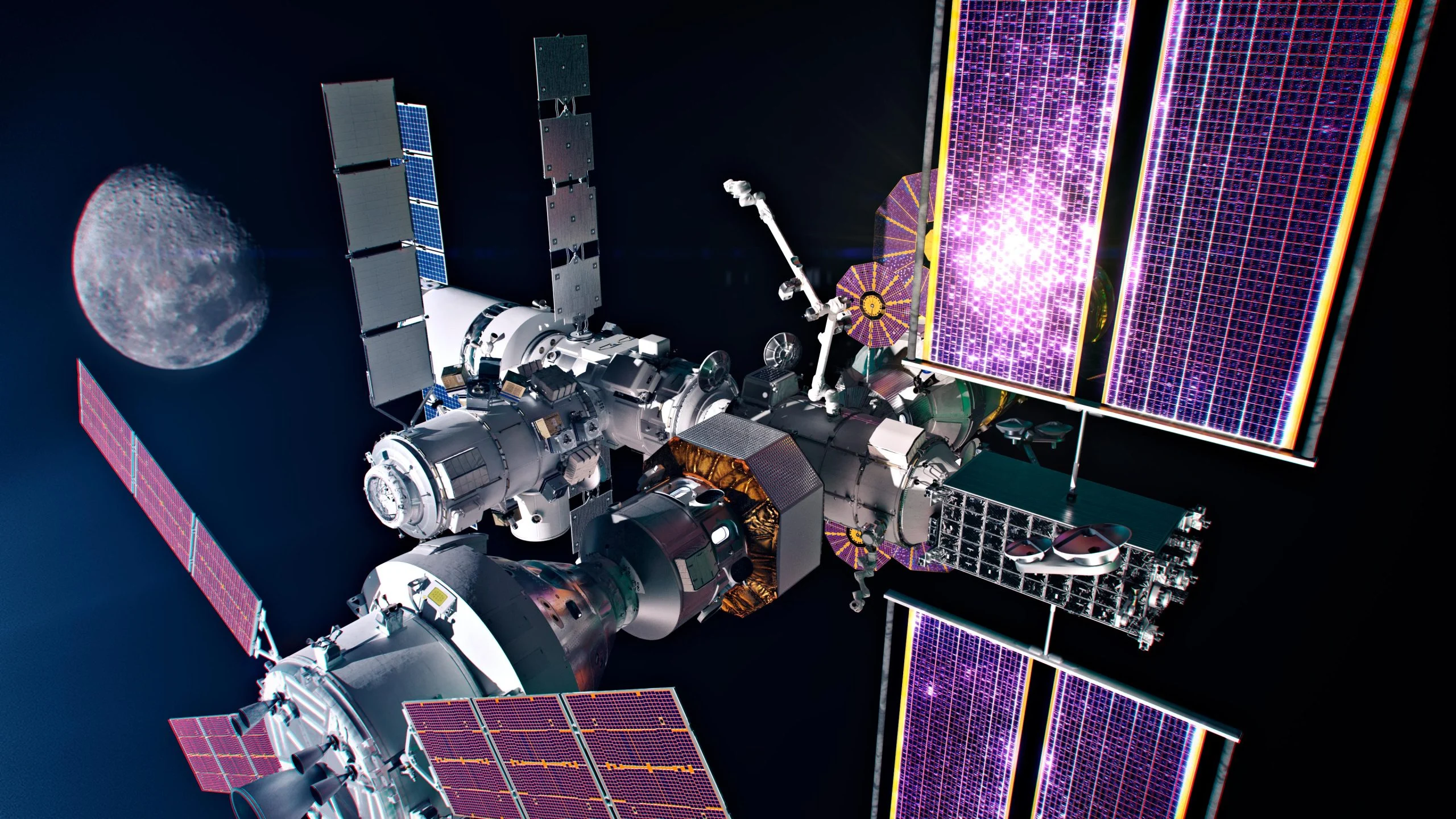A New Era of Space Exploration
NASA and SpaceX are collaborating to construct Gateway, the most advanced space station ever built, which will orbit the Moon. As a cornerstone of NASA’s Artemis program, Gateway will support human missions to the lunar surface, facilitate deep-space research, and pave the way for future missions to Mars. This station represents humanity’s first long-term presence in deep space and will be a critical hub for scientific discovery and technological advancements.
Gateway: The Lunar Space Station of the Future
Progress in Development
Significant strides have been made in the development of Gateway, particularly in the construction of its core module, the HALO (Habitation and Logistics Outpost). International partners, including the European Space Agency (ESA) and the Italian Space Agency, are actively contributing to its design and testing. A recent milestone was reached when officials from NASA and its partners visited the Thales Alenia Space facility in Turin, Italy, to inspect the HALO module, which is nearing completion.
Once fully assembled, the HALO module will be shipped to Northrop Grumman’s facility in Gilbert, Arizona, for final integration and testing. Subsequently, it will be combined with the Power and Propulsion Element at NASA’s Kennedy Space Center before being launched into lunar orbit.
Key Milestones in HALO Development
International Collaboration and Testing
NASA’s Gateway Program Manager, Jon Olansen, emphasized the importance of global partnerships in constructing and testing the station’s components. “This achievement is just the beginning. We are seeing remarkable progress worldwide, all driven by a shared vision of expanding human exploration beyond Earth,” Olansen stated.
NASA is aiming to launch HALO and the Power and Propulsion Element by December 2027. These modules will be transported aboard a SpaceX Falcon Heavy rocket and will undergo an uncrewed journey to lunar orbit, collecting vital data on deep-space radiation before being used by Artemis IV astronauts.
Enhancing Lunar Communication and Science
High-Speed Connectivity with ESA’s Lunar Link
Gateway will feature ESA’s Lunar Link communication system, which will provide high-speed, reliable communication between the Moon and the station. This system is currently undergoing rigorous testing at Thales Alenia Space’s facility in Cannes, France.
When Artemis IV astronauts arrive, they will bring the ESA-developed Lunar I-Hab module, further expanding Gateway’s capabilities. Additionally, Northrop Grumman and Thales Alenia Space have successfully completed welding the HALO module, which has undergone critical stress and pressure tests to confirm its durability in deep space conditions.
Powering the Future of Space Exploration
Advancements in Solar Electric Propulsion
Maxar Space Systems is assembling Gateway’s Power and Propulsion Element, designed to be the most powerful solar-electric propulsion spacecraft ever deployed. Notable developments include the installation of Xenon and chemical propulsion fuel tanks, as well as the qualification of the largest roll-out solar arrays ever built. These advancements will enable Gateway to support extended deep-space missions efficiently.
SpaceX and Blue Origin: Supporting Lunar Exploration
Lunar Landers and Crew Transport
SpaceX plays a pivotal role in the Artemis program by providing the Starship human landing system for Artemis III and ferrying astronauts from Gateway to the lunar South Pole during Artemis IV. Additionally, SpaceX will supply logistics spacecraft to support crewed missions.
NASA has also partnered with Blue Origin, which is developing the Blue Moon lander for Artemis V. The inclusion of two distinct lunar landing designs ensures operational flexibility and sustains a regular cadence of Moon missions as NASA prepares for human exploration of Mars.
Expanding Gateway’s Capabilities with Global Partnerships
Contributions from International Space Agencies
The Canadian Space Agency (CSA) is developing Canadarm3, an advanced robotic system for Gateway. Meanwhile, Japan’s JAXA is designing and testing the Lunar I-Hab’s life support systems, batteries, and the HTV-XG resupply vehicle.
The UAE’s Mohammed Bin Rashid Space Centre (MBRSC) has also joined the Gateway initiative, working on the design of a Crew and Science Airlock module, which will be delivered during Artemis VI. Thales Alenia Space has been selected as the prime contractor for this critical component.
Pushing the Boundaries of Science and Deep-Space Research
Radiation Studies and Long-Term Missions
Ongoing research aboard Gateway includes three primary investigations focused on radiation exposure. These studies will enhance our understanding of space weather phenomena, galactic cosmic rays, and their impact on astronauts and equipment.
Gateway’s modular structure will allow for continuous scientific experiments, both with and without a crew, providing essential data on the long-term effects of deep-space radiation. This knowledge will be instrumental in designing next-generation spacecraft and preparing for human missions to Mars.
Conclusion
Gateway is more than just a space station—it is a cornerstone of humanity’s future in space exploration. By providing a sustainable platform for lunar missions and deep-space research, it will serve as a testbed for the technologies and systems necessary to reach Mars. With contributions from global partners and the leadership of NASA and SpaceX, Gateway is set to revolutionize space exploration for generations to come.
